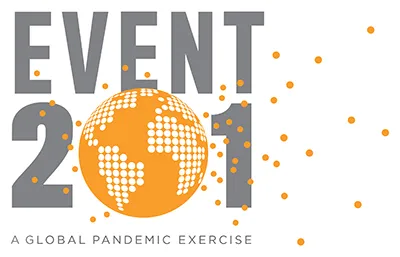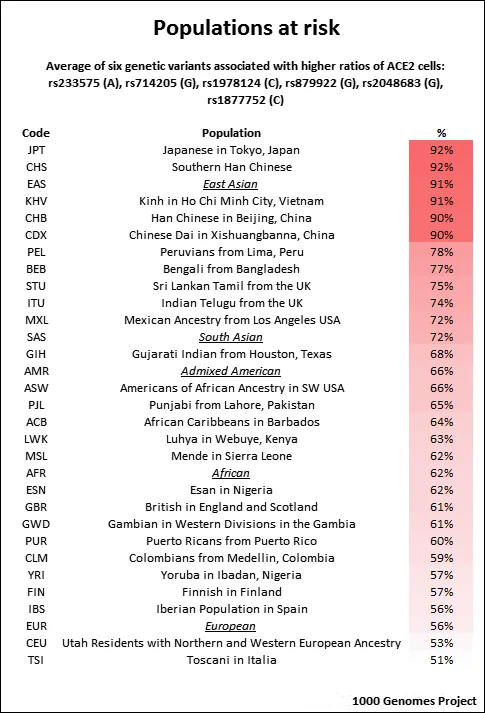
IMG source - CenterForHeathSecurity.org
Presently the facts necessary to make rational decisions regarding nCoV are scant, fluid, and obscured, perhaps deliberately. Everyone wants to be safe, and to do that we need to make good decisions, which depend on good understanding. We can't have good understanding if we don't have good information, and we don't have good information.
First, it's very obvious that China is not releasing accurate numbers regarding any metric relevant to the pandemic. They can't, even if they do their best. They don't have adequate personnel, facilities, supplies, or systems to collect, understand, and provide those metrics. Without enough personnel, they can't process all those presenting with symptoms and determine who is and isn't infected. Without the facilities, even if they did have enough personnel, they can't do the processing, because they have no place to do so. Without the supplies, such as the test kits that are absolutely in too short supply to test everyone, they can't do the testing. Finally, with China obviously intent in recent years on suppressing unsanctioned communications, their information systems are designed to suppress rather than share, and that's going to cause what information they are able to collect and understand to not be communicated well.
As a result of these facts, it's probable that the estimates derived from epidemic models are more accurate regarding infection rates, survival, and etc. than the actual numbers reported. Enemedia incompetence to report on science matters is endemic and notorious. A good example of this is the utterly hallucinatory reports of mortality rates, which seem to be just dividing the number of reported cases with the number of reported deaths.
This ignores that dying from a disease takes time. Since this disease has an incubation period, a symptomatic period, and a recovery period, just dividing the number of folks that have become symptomatic by the number that did not reach the recovery period is going to produce a fictional result. Frankly, mortality rates aren't going to be possible to calculate accurately until after significant spread of the disease is over. The mortality rate is not ~2%, as reported by enemedia sources that arrived at that number by this means.
Neither can an accurate mortality rate be gained by comparing deaths to those cured. It takes longer to be cured than it does to die, so that skews the rate towards mortality pretty significantly. While doing that results in about a 40% mortality rate today, using weekly historic figures shows that calculation is dropping steadily, from ~60% a couple weeks ago, to ~50% last week, to ~40% today, and that shows the time to recovery being more reflected in that calculation as more time passes.
In a month or two we might be able to get better actual data on which to base a reasonable guess, but that information just isn't available today.
As to transmission rates, some good science has tried really hard to use cases that are well documented to estimate the R0, or the number of persons to which an infected person will transmit the disease. Those guesses are today ~4. This is a terrible prospect, and I really hope it's lower - but facts don't care about my hopes. To get an understanding of what an R0 of ~4 means, an R0 of 2 is exponential. 4 is the square of exponential.
However, just like all diseases, people vary in their susceptibility. Kung Flu seems to enter lung cells through a specific mechanism that is determined by how much ACE 2 is expressed. Again, much is not known about what this means, but here's a chart that generally describes who expresses how much ACE 2.

IMG source - /pol/ [note: another chart shows folks of Arab descent have ACE 2 expression in the single digits. If this hypothesis is correct, they will be almost immune. Also, for anyone speculating that China might have created this virus in the Wuhan BSL-4 lab, the fact that Asians are the most susceptible to it will require a damn good explanation.]
What we have learned from well documented cases, mostly from places where they aren't overwhelmed with patients, is that the virus has from 2 days to two weeks of latency, and that folks that have not yet become ill can transmit the virus [I find this study very significant, because Peng Zhou is one of the authors, and suspect he has extremely good familiarity with nCoV]. Basically, everyone that becomes infected becomes a Typhoid Mary for up to two weeks before they realize they are sick and can take steps to prevent giving it to anyone, and others can take steps to keep from getting it from them.

IMG source - George Soper Investigates Typhoid Mary, Youtube.com
That's really bad, as is obvious, and would support the very high R0 estimates we are seeing. But it's worse. For most illnesses, once people recover from the illness, their immune systems have destroyed the bug, and they can't transmit it anymore.
That's not the case with Kung Flu. After people recover and no longer are ill, they are still able to transmit the disease. There's a reason for this difference from other illnesses, and more unknowns that spring from that.
One of the symptoms that some victims have is called lymphopenia, which is a reduction in white blood cells, or lymphocytes. This is basically destruction of the immune system. It's what happens in AIDS, the Acquired Immune Deficiency Syndrome.
A paper published on bioRxiv recently claimed that nCoV had 4 genetic insertions from HIV, which sparked a shitstorm, and has since been withdrawn by the authors for revision. Those authors are under immense pressure by other scientists, as well as various entities concerned with controlling the information available to the public, or shills. One of the reasons for the intense pressure applied to those researchers is that for HIV genes to be in nCoV, the virus would have to have been bioengineered, and every government with a BSL-4 lab does not want people to even think that thought.
Whether or not the nCoV was bioengineered is one issue, and folks that want to know are going to have to watch that debate unfold, and be aware of intense pressure from shills to be able to sort it from actual scientific discourse.
Regarding immune deficiency, whether or not it was bioengineered does not matter to mortality rates. What matters is whether nCoV causes some form of AIDS in those that have been infected. From the lymphopenia and the fact that those that have survived the infection remain able to transmit the virus afterwards, it appears that it may to some unknown degree.
AIDS has been a terrible scourge on humanity, and it has so far been transmissible only through direct contact with the bodily fluids of infected persons. nCoV is a lot more virulent, meaning transmissible. nCoV is airborne, and airborne AIDS is a horrifying nightmarish prospect. A world in which the survivors of the plague are all Typhoid Marys is even worse.
Presently we don't know how much immune systems are suppressed, how long transmission persists after symptoms end, and much else we need to know before we can just kiss our asses goodbye and prepare to die gracefully, so I'm not even speculating as to the consequences that might result. There's a lot of unknowns about this known.
The point of this is that Kung Flu isn't the flu at all. It's more virulent than the flu, possibly more deadly than the Spanish Flu of 1918, and maybe some kind of AIDS even if you survive the initial infection. Worst of all, every survivor might remain a lifelong carrier. The idea here is that it's best not to get it, even if you think the mortality rate is a lot lower, as the enemedia is reporting (falsely).
We know it's extremely contagious, has a pretty high mortality rate, though lower than Ebola, and causes a reduction in lymphocytes in some patients, suppressing their immune systems, for an unknown duration after they recover from the initial illness.
We can't put good numbers on transmission rates, mortality, or even guess as to the consequences of the lymphopenia.
All I can recommend is try to make sure you don't get it. Panic is the opposite of what you should do, because panic is just reacting to your emotions. It destroys your ability to make rational decisions. Stay rational, and you'll make better decisions, and be more likely to avoid tragedy.
We're not all gonna live through this.
Live.
